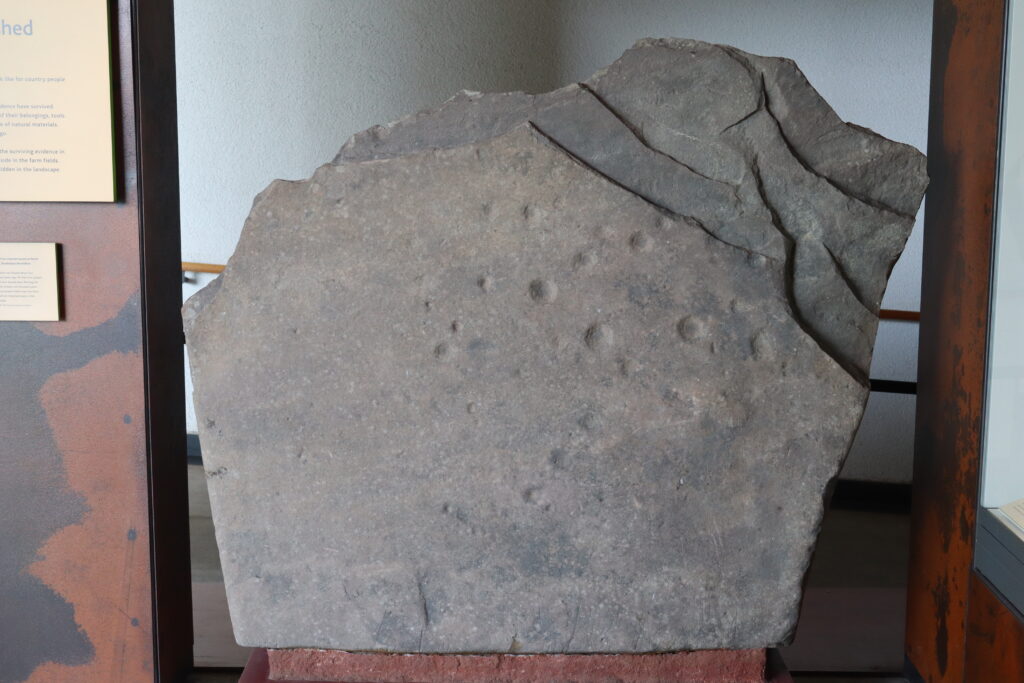I had visited the National Museum of Rural Life in East Kilbride, Scotland with Anne over 20 years previously and had noted one striking and enigmatic object. This had been a large stone slab from a neolithic burial site in Perthshire engraved with so called ‘cup’ marks. My intuition at the time was that these marks represented a star map of time kind. I had at the time taken numerous photographs with a Canon ‘compact’ camera but the set of images were now not entirely lost but would require some time to retrieve. It would be convenient to just revisit the location.
This current visit was taking place the day after inspecting the highly important neolithic rock carvings site at Ballochmyle in Ayrshire, the county in which I was now living. It was quite easy to locate the museum run by the National Museums Scotland in East Kilbride. I would surmise that not a single item in the exhibits had changed. In a corner on the ground floor level there it was – the large flat rock with its carvings. It only took a few seconds to take the photographs. On reflection I should have taken close up images of the marks themselves to look for evidence of tool craft. With the high resolution images, however, this was perhaps unnecessary.

There had been no reference in the museum to the type of stone used. It was obviously a sedimentary type – a mudstone, shale or sandstone of some type. The complete working of the stone would have taken place using stone tools using presumably items of stone of a much harder type. Have any likely stone tools for this craft been identified? Have keen individuals tried to replicate such carvings? How long would it have taken? These are all questions that have answers that can can be to some extent resolved.

Were the marks on the stone completed at the one time or over a period of time? Does each mark signify a burial at the site? If so does the size of the mark matter or its position?

In the struggle against cruel nature in neolithic times, what never changed? That would be the stars in the sky – the sharp, clear dots of light above such communities. The thought emerges that the marks on the stone record to where their departed have taken flight. They can look up to the sky at night and point to where they are now located.
Do the markings on the stone correspond to current star positions? Hard to tell. There is perhaps consideration that over say 4000 years ago the positions of stars will have very slightly changed. Nothing in the universe is standing still. An astronomer would know.
I have drawn up a map of points from the images taken and currently am checking this with the major visible stars. Of course in our modern times our links with the visible stars are fading. Light pollution, air pollution and Starlink satellites all take their toll. In those distant times, there would be more stars to see.

Could it indeed have been that to gaze at the dark neolithic sky would have been to commune with ancestors? The marks on stone were perhaps just a reminder of what they held to be true.
